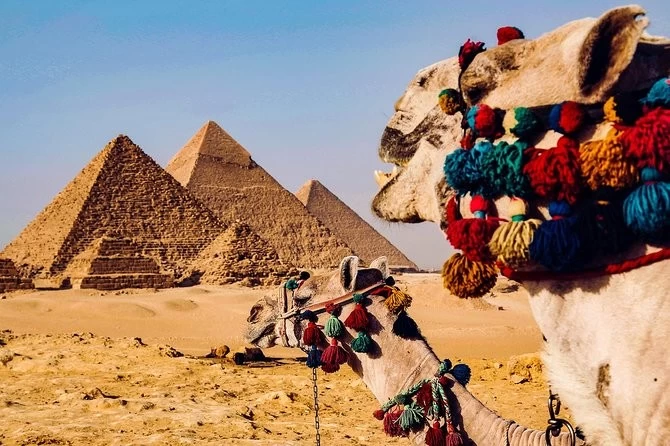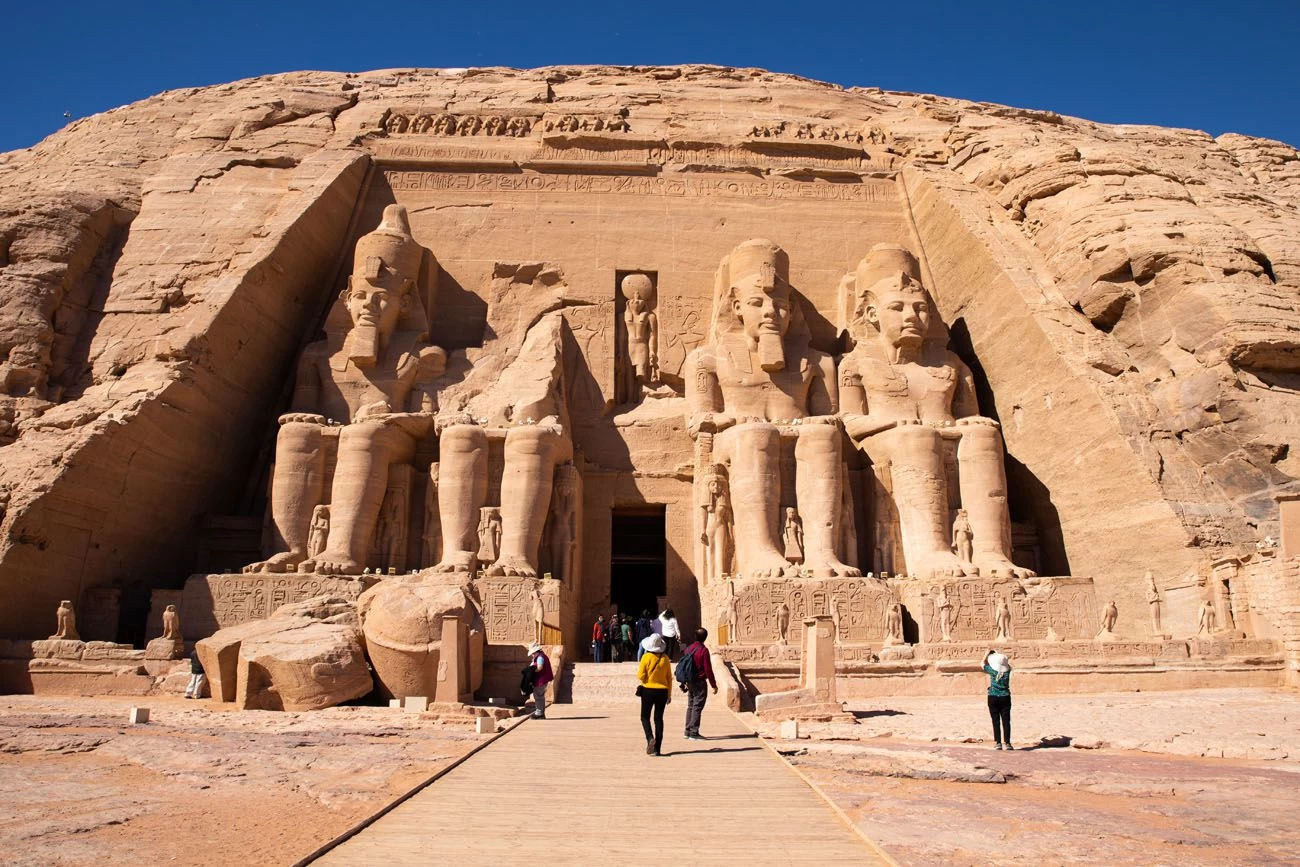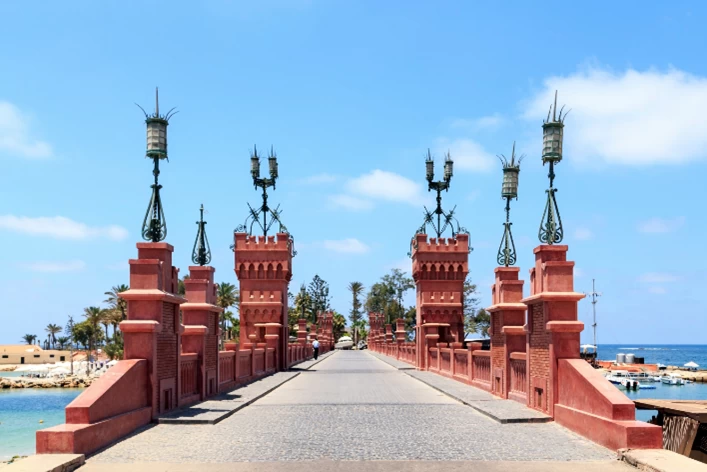Top Things to Do in Cairo

Discover Cairo & Giza: A Journey Through Egypt’s Rich History
Cairo, the capital of Egypt, is a bustling metropolis that bridges the past and present. With a population of over 20 million people, it is one of the largest cities in Africa and the Middle East. Known as the "City of a Thousand Minarets" due to its numerous mosques, Cairo has a deep-rooted history dating back to ancient, medieval, and modern times.
A Brief History of Cairo
Cairo’s origins trace back to the first century when it was a Roman fortress town known as Babylon. However, the city as we know it today was founded in 969 CE by the Fatimid dynasty and quickly became a major center of Islamic learning and trade. Over the centuries, Cairo has been ruled by various dynasties, including the Mamluks, Ottomans, and the modern Egyptian state. Today, it remains Egypt’s political, economic, and cultural heart.
Cairo’s Inhabitants & Culture
Cairo is a melting pot of diverse cultures, traditions, and influences. The city is known for its fast-paced lifestyle, warm hospitality, and deep sense of community. Its people, called Cairenes, are renowned for their resilience, humor, and friendliness. Cairo is a city where modern skyscrapers stand alongside medieval mosques, and traditional markets thrive amidst contemporary shopping malls. The local cuisine, street food, and vibrant nightlife add to its unique charm.
Giza, located on the western banks of the Nile, is home to Egypt’s most iconic landmark—the Pyramids of Giza. Together, Cairo and Giza form the heart of Egypt’s rich cultural and historical heritage.
Must-Visit Attractions in Cairo & Giza
1. The Pyramids of Giza & The Sphinx
No visit to Egypt is complete without witnessing the last remaining Wonder of the Ancient World—the Pyramids of Giza. Built over 4,500 years ago as royal tombs for the Pharaohs, the pyramids include the Great Pyramid of Khufu, the Pyramid of Khafre, and the Pyramid of Menkaure. The Great Pyramid originally stood at 146 meters and was the tallest man-made structure for over 3,800 years. The enigmatic Sphinx, a colossal limestone statue with a lion's body and a Pharaoh's face, stands guard over the pyramids, adding to the site’s mystique. Visitors can also explore the Solar Boat Museum, which houses a reconstructed boat that was buried alongside the Great Pyramid.
2. Saqqara & The Step Pyramid of Djoser
Located just south of Giza, Saqqara is home to Egypt’s oldest pyramid—the Step Pyramid of Djoser. Designed by the architect Imhotep, this pyramid revolutionized ancient Egyptian architecture by introducing a six-step design. Saqqara is a vast necropolis with numerous tombs, including the Mastaba of Ti and the Pyramid of Teti, which features well-preserved Pyramid Texts inscribed inside. The area also contains the Serapeum, an underground complex housing the massive sarcophagi of sacred Apis bulls.
3. Memphis - The Ancient Capital
Once the first capital of unified Egypt, Memphis was founded by Pharaoh Menes around 3100 BCE. Today, visitors can explore the ruins and marvel at the massive 10-meter-long statue of Ramses II, which showcases the grandeur of ancient Egyptian sculpture. The Alabaster Sphinx, a smaller yet impressive monument, also resides in Memphis. The site provides insight into Egypt’s early civilization, which thrived as a political and cultural hub for centuries.
4. The Grand Egyptian Museum (GEM)
Set to be the largest archaeological museum in the world, the Grand Egyptian Museum will house over 100,000 artifacts, including the complete collection of King Tutankhamun’s treasures. Located near the Pyramids of Giza, this state-of-the-art museum will feature a stunning entrance hall with the colossal statue of Ramses II, immersive multimedia displays, and a grand staircase lined with statues from different periods of Egyptian history.
5. The Egyptian Museum
Located in Tahrir Square, the Egyptian Museum is home to an impressive collection of over 120,000 artifacts. Visitors can see the legendary golden mask of King Tutankhamun, royal mummies, and countless ancient relics that narrate the story of Egypt’s powerful civilization. The museum also contains rare papyrus documents, jewelry, and statues from different dynasties, offering a deep dive into Egypt’s glorious past.
6. Coptic Cairo
A spiritual and historical district, Coptic Cairo is home to some of the oldest Christian churches in the world, including the Hanging Church, which dates back to the 3rd century and is built over the ruins of a Roman fortress. The Church of St. Sergius and Bacchus is believed to have sheltered the Holy Family during their flight into Egypt. The Ben Ezra Synagogue, originally a Coptic church, is steeped in history and is said to be the site where baby Moses was found in the reeds.
7. Islamic Cairo - The Citadel & Mohamed Ali Mosque
One of the most stunning landmarks in Cairo, the Citadel was built by Saladin in the 12th century as a defensive fortress against Crusader invasions. Within its walls lies the magnificent Mohamed Ali Mosque, also known as the Alabaster Mosque, with its grand domes and Ottoman-style architecture. Visitors can also explore the Mosque of Sultan Hassan and the Al-Rifa'i Mosque, both of which feature intricate Islamic designs and towering minarets.
8. Khan El Khalili Bazaar
For a taste of Cairo’s vibrant atmosphere, visit Khan El Khalili, one of the oldest and most famous markets in the Middle East. Wander through its labyrinth of narrow streets, where you can buy spices, perfumes, handcrafted jewelry, traditional souvenirs, and exquisite lanterns. The bazaar is also home to historic cafés, such as El Fishawy, where visitors can sip on traditional mint tea while soaking in the lively ambiance.
A Glimpse Into Cairo’s Culture & Festivities
Cairo is a city that never sleeps, filled with lively markets, bustling streets, and rich traditions. Egyptians are known for their hospitality and love for celebrations. Some of the happiest times in Cairo include:
-
Ramadan & Eid Celebrations – Streets are illuminated with lanterns, and families gather for feasts after fasting.
-
Pharaonic Sun Festival – A bi-annual event at Abu Simbel where the sun illuminates the inner sanctum of Ramses II’s temple.
-
National Holidays & Revolution Day – Marking key moments in Egypt’s modern history.
Conclusion
Cairo and Giza offer an unforgettable journey through Egypt’s rich past, from ancient pyramids to Islamic and Coptic landmarks. Whether you’re exploring grand museums, wandering through old streets, or soaking in the lively culture, this timeless city will leave you in awe. If you're planning your next adventure, make sure to put Cairo and Giza at the top of your travel list!
"Cairo and Giza offer an unforgettable journey through Egypt’s past, from ancient pyramids to Islamic and Coptic landmarks, where history and culture come to life in every corner."








